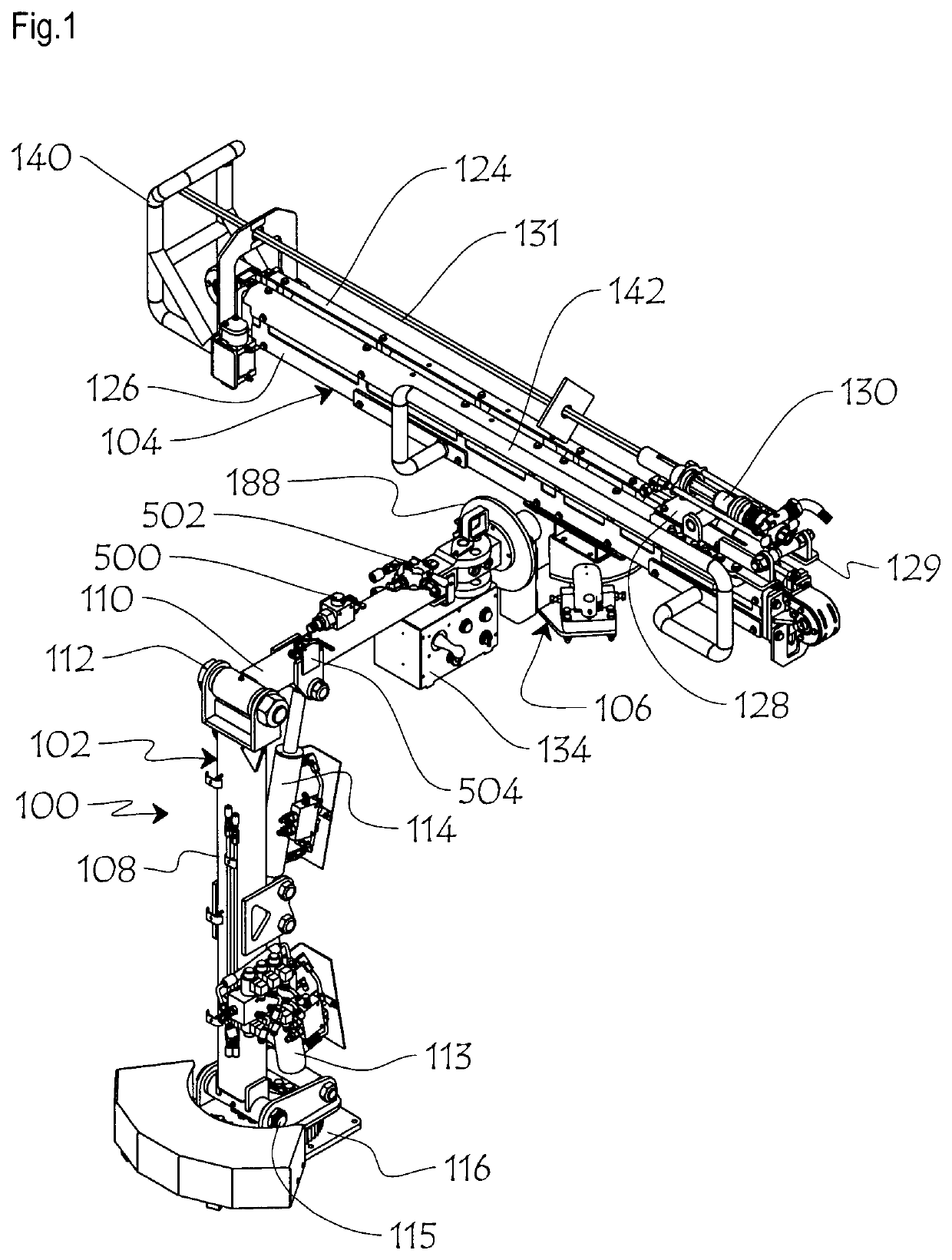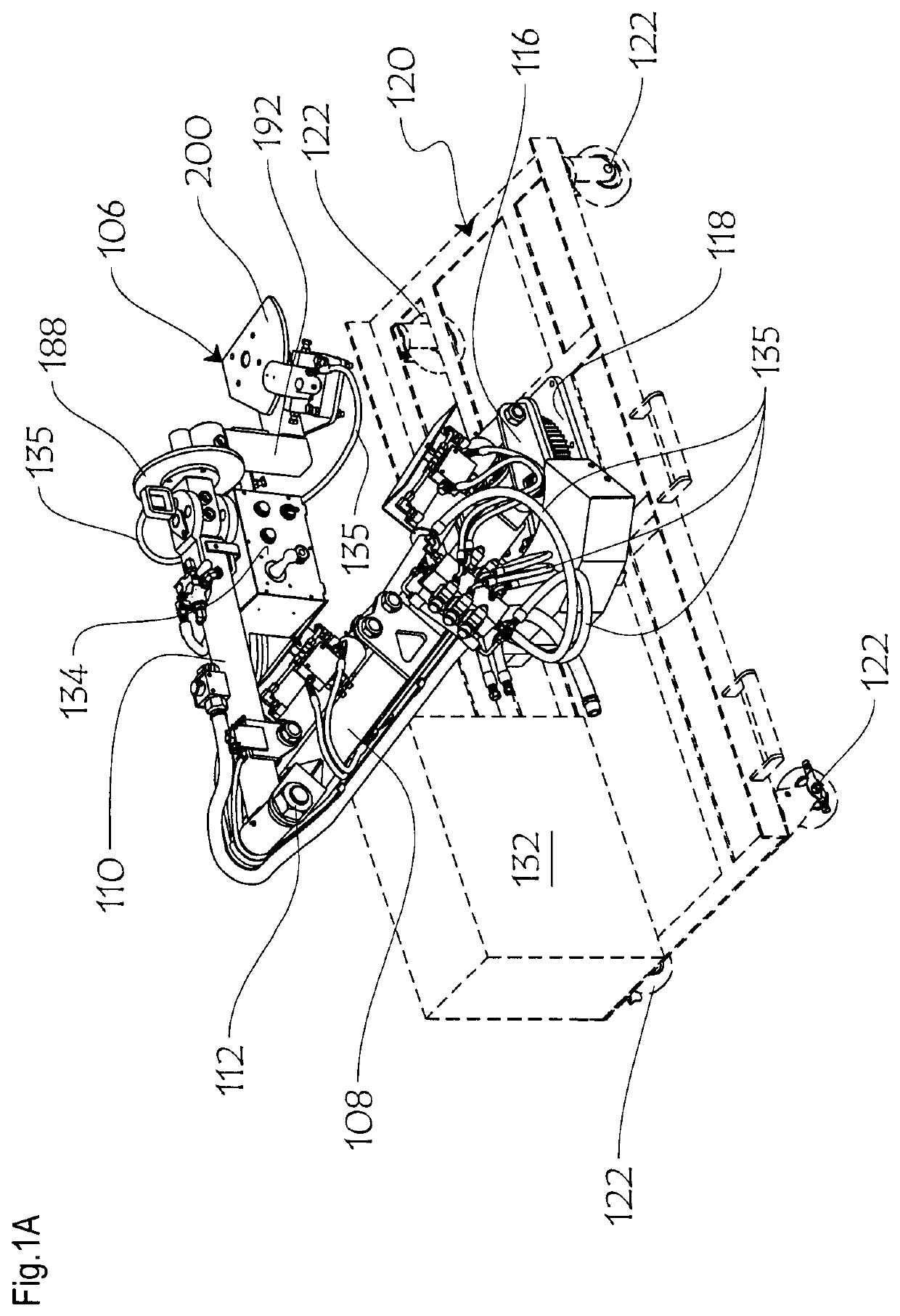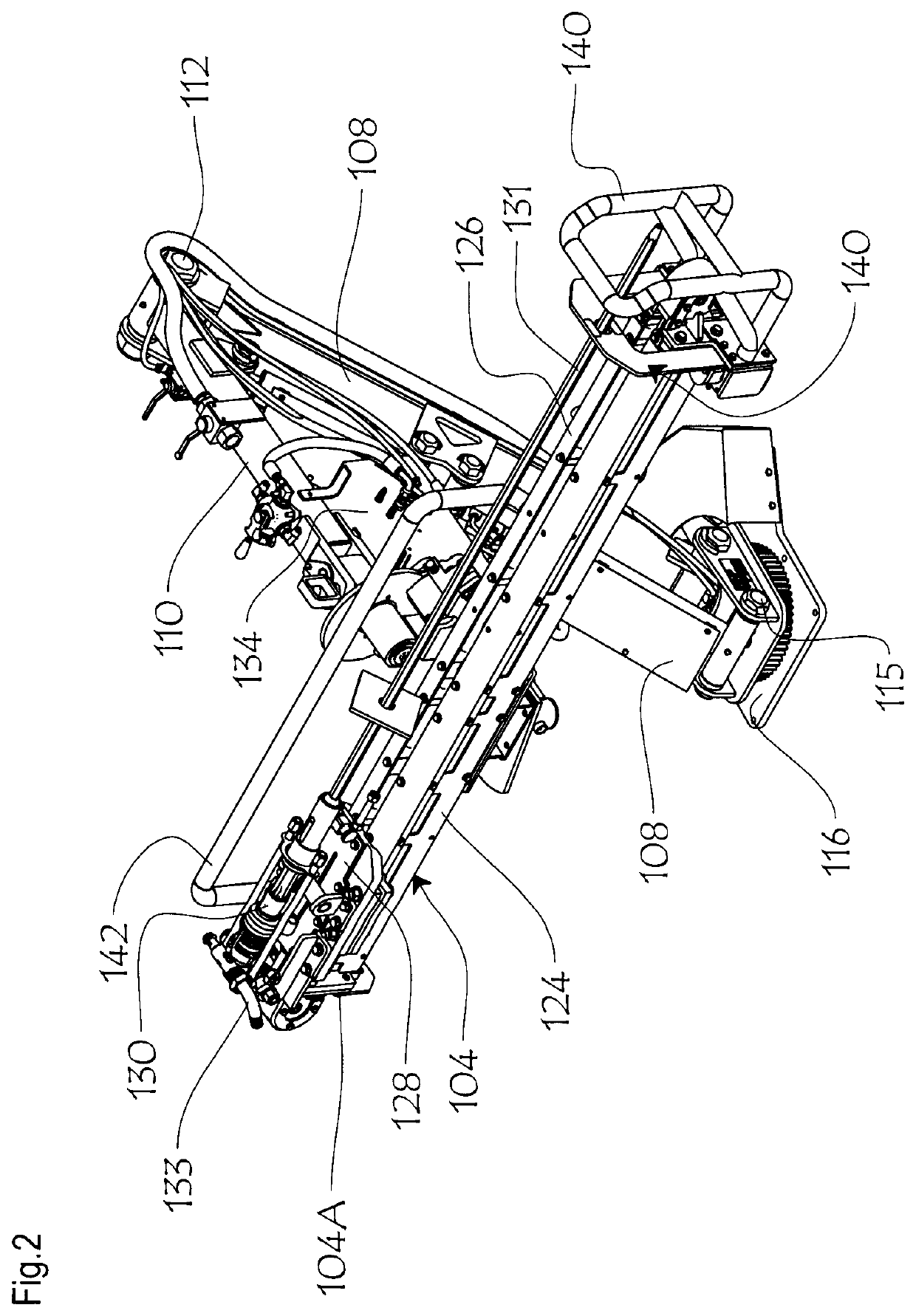Self-supporting pneumatic hammer positioner with universal joint
a pneumatic hammer and universal joint technology, applied in the direction of drilling machines and methods, portable percussive tools, anchoring bolts, etc., can solve the problems of requiring human eye-hand coordination, releasing debris from the top vault of the mining tunnel, and affecting the safety of workers, so as to improve the acceptance level of invention, reduce physical damage, and promote learning
- Summary
- Abstract
- Description
- Claims
- Application Information
AI Technical Summary
Benefits of technology
Problems solved by technology
Method used
Image
Examples
first embodiment
[0057]Drill positioner 100 shown in FIGS. 1 to 28 consists of an articulated mast or boom 102, turret 104 and a two axes joint assembly 106 interconnecting an intermediate section of the turret with the outer end of the boom. Boom 102 includes lower and upper arms 108, 110, interconnected by a horizontal pivot mount 112. Hydraulic ram 114 pivotally biases boom upper arm 110 relative to boom lower arm 108 about pivot 112. A coupling assembly 116 is mounted to the bottom end of lower arm 108. Another hydraulic ram 113 pivots boom lower arm 108 relative to coupling 116 about pivot 115.
[0058]In one embodiment, illustrated in FIG. 1A, coupling assembly 116 releasably rotatably interlocks with a complementary rotatable coupling mount 118 over a platform 120 movably carried over ground by two pairs of corner casters 122. Couplings 116, 118, enable rotation of the boom lower arm 108 about a vertical axis. To the outer end of boom upper arm 110, opposite boom coupling 116 is releasably fixed...
second embodiment
[0104]In turret of FIGS. 29 to 36, the pivotal inner end portions of drill bit centering arms 1146A, 1148A, are pivotally interconnected by an S-shape interlink rod 1154, at pivot mounts 1154A, 1154B being parallel to but slightly offset relative to pivot mounts 1146A, 1148A, in such a fashion that scissor type movement of arms 1146, 1148 is achieved, i.e. when arm 1146 moves away from arm 1148, arm 1148 will concurrently pivotally move away due to the offset interlink rod 1154. A manual lever 1156 projecting transversely outwardly from the main body 1105 of turret 1104 is operatively connected at pivot axle 1146A, all in such a way that in a raised condition of lever 1156, the top ends of arms 1146A, 1148A, are closed against one another (FIGS. 29, 29A, 29B, 29C), and cylindrical channel 1150, 1152 is formed (FIG. 29C), whereas when lever 1156 is manually brought down to a lowered condition (FIGS. 30, 30A), the top ends of arms 1146B, 1148B, are spread apart. In an alternate embodi...
PUM
 Login to View More
Login to View More Abstract
Description
Claims
Application Information
 Login to View More
Login to View More - R&D
- Intellectual Property
- Life Sciences
- Materials
- Tech Scout
- Unparalleled Data Quality
- Higher Quality Content
- 60% Fewer Hallucinations
Browse by: Latest US Patents, China's latest patents, Technical Efficacy Thesaurus, Application Domain, Technology Topic, Popular Technical Reports.
© 2025 PatSnap. All rights reserved.Legal|Privacy policy|Modern Slavery Act Transparency Statement|Sitemap|About US| Contact US: help@patsnap.com



